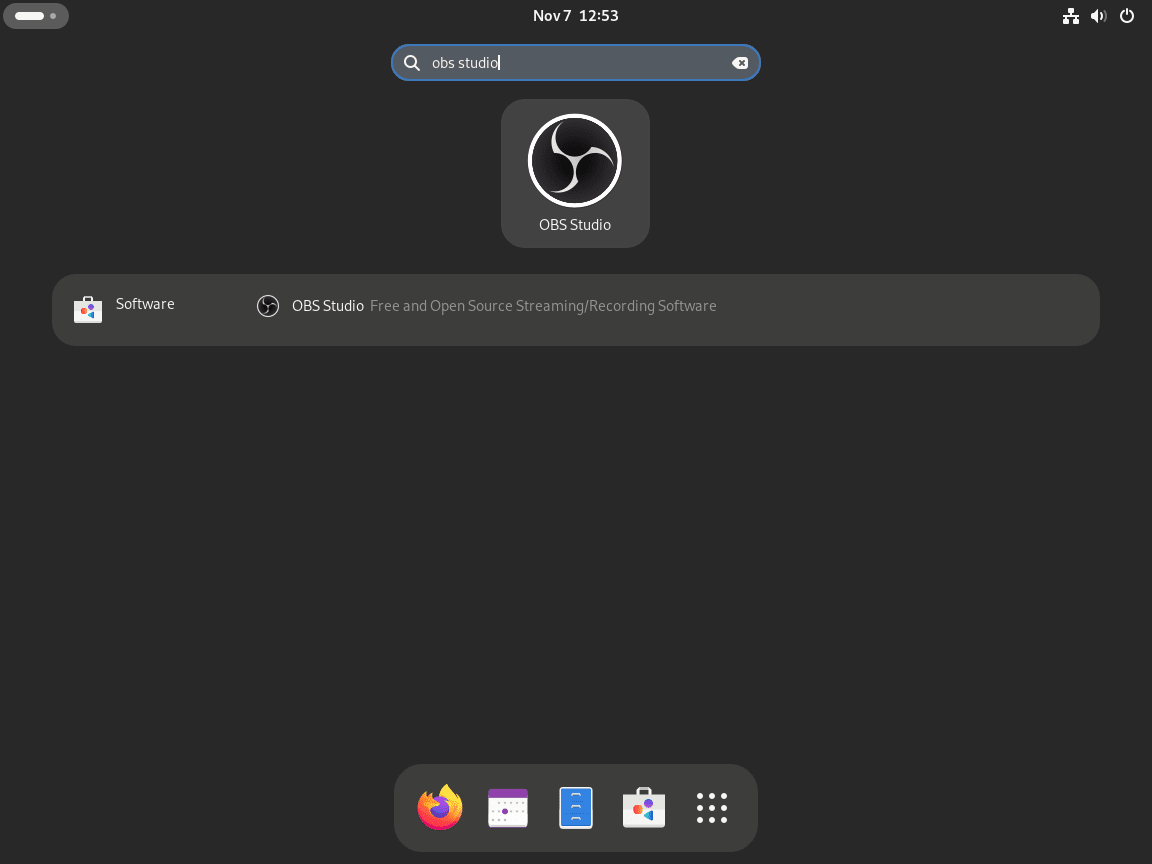OBS Studio (Open Broadcaster Software) is a powerful, open-source software for video recording and live streaming, widely used by content creators, gamers, and professionals. It offers an extensive range of features, including scene composition, real-time video and audio capturing, and encoding support for a variety of formats. OBS Studio is known for its flexibility, allowing users to customize their streaming setups with multiple sources, overlays, and transitions, making it a go-to choice for high-quality streaming on platforms like Twitch, YouTube, and Facebook.
On Fedora 40 or 39, OBS Studio can be installed using either Fedora’s AppStream or Flatpak from Flathub. Fedora AppStream provides a version of OBS Studio that is well-integrated with the Fedora system, ensuring stability and ease of use. For users who prefer a sandboxed environment, Flatpak offers a secure way to install OBS Studio while keeping it isolated from the rest of the system. This guide will walk you through both installation methods, allowing you to choose the best approach based on your preferences and needs.
Method 1: Install OBS Studio via DNF
Update Fedora Before OBS Studio Installation
Before proceeding with the OBS Studio installation, ensure your Fedora system is current. This step minimizes potential conflicts and ensures compatibility. Execute the following command in your terminal to update your system:
sudo dnf upgrade --refreshInstall OBS Studio via DNF Command
To install OBS Studio on Fedora, utilizing the main release appstream for most users is the best method, given it’s a 6-month cycle release. Input the following command in your terminal to begin the installation:
sudo dnf install obs-studioFor developers interested in OBS Studio’s development packages, install the development package with:
sudo dnf install obs-studio-develOnly undertake this installation if you need the development package for programming or compilation purposes.
Method 2: Install OBS Studio via Flatpak and Flathub
The second option is to use the Flatpak package manager installed on Fedora-based systems.
Enable Flathub for OBS Studio Installation
Begin by enabling Flathub, which is essential for accessing Flatpak applications. Launch your terminal and input:
flatpak remote-add --if-not-exists flathub https://flathub.org/repo/flathub.flatpakrepoThis command sets up Flathub as a source for Flatpak packages if it isn’t already configured.
Install OBS Studio via Flatpak Command
With Flathub enabled, proceed to install OBS Studio. Type the following command to initiate the installation:
flatpak install flathub com.obsproject.Studio -yThis command directly installs OBS Studio and includes the -y flag to confirm the installation, streamlining the process automatically.
Troubleshooting OBS Studio Installation Issues with Flatpak
Occasionally, you might encounter an error indicating an issue accessing Flathub’s repository. Should you see an error message like “error: Unable to load summary from remote flathub: Can’t fetch summary from disabled remote ‘flathub’”, resolve it by executing:
flatpak remote-modify --enable flathubRunning this command re-enables the Flathub repository, addressing the problem and allowing you to continue the installation.
Launch OBS Studio UI
Launching can be done in a few ways now that you have the software installed.
CLI Commands to Launch OBS Studio
Firstly, in your terminal, you can use the following command:
obsThis command is efficient for users who prefer or require command-line interaction, quickly booting up OBS Studio without navigating through the graphical user interface.
Alternatively, the command is slightly different for Flatpak installations; run the following if you have used this secondary installation method:
flatpak run com.obsproject.StudioGUI Method to Launch OBS Studio
For users who favor a graphical approach, OBS Studio is accessible through the following steps:
- Click on Activities at the top left corner of the screen.
- Select Show Applications to view the list of installed applications.
- Search for and click on OBS Studio to launch the application.


Additional Commands For OBS Studio
Update OBS Studio
Maintaining the latest version of OBS Studio ensures access to new features and security patches. Update the application using the appropriate package manager to your installation method.
DNF Package Manager OBS Studio Update Command:
To check for updates and apply them, execute:
sudo dnf update --refreshThis command refreshes the repository metadata and updates the OBS Studio package if a new version is available.
Flatpak Package Manager OBS Studio Update Command:
For those who have installed OBS Studio via Flatpak, use the following command to update:
flatpak updateThis will seek out and apply updates for all Flatpak applications, including OBS Studio.
Remove OBS Studio
If OBS Studio is no longer needed, removal is straightforward.
DNF Package Manager OBS Studio Remove Command:
To remove the application installed via DNF, along with its dependencies:
sudo dnf remove obs-studioFlatpak Package Manager OBS Studio Remove Command:
For removal of an OBS Studio Flatpak installation, use the following:
flatpak remove --delete-data com.obsproject.Studio -yFinal Remarks
To summarize, installing OBS Studio on Fedora through the AppStream repository offers a straightforward and reliable experience, perfect for those seeking easy integration. If you prioritize security and flexibility, the Flatpak method from Flathub is a great alternative, thanks to its sandboxed environment. Both options provide access to OBS Studio’s complete feature set, allowing you to create high-quality video content and live streams on Fedora. Make sure to keep OBS Studio updated via your chosen method to ensure it stays optimized for all your recording and streaming needs.

